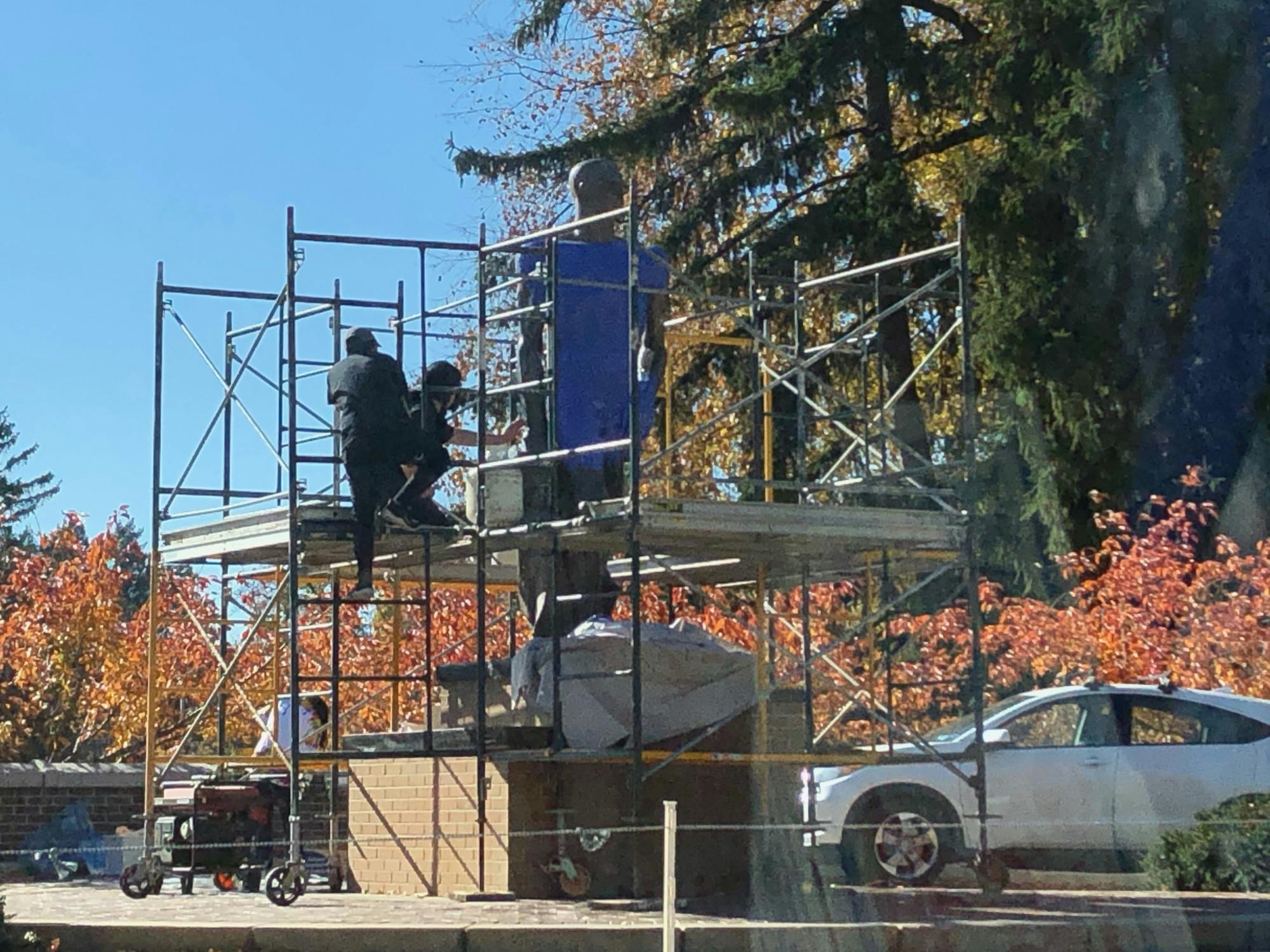Pedestrians walking by the Sparty statue were struck with confusion last week when they saw wooden scaffolding and blue silicone molds surrounding the mascot. Taking a few steps closer, they would have found a sign explaining this is a project from the Art, Art History and Design Department, not an attempt to alter Sparty.
The Critical Race Studies Artist-in-Residence is a program where artists from across the country get the opportunity to teach a class and work on a project that integrates them with the arts. This year’s artist is Young Joon Kwak, a sculptor from Los Angeles.
Kwak took molds of the Sparty statue to reimagine it into another piece of art that will be displayed in the MSU Union starting March 25. Karin Zitzewitz, interim chair of the department, hopes their background might provide a new perspective on the statue.
“They have a totally different background, they are a queer, trans, Korean artist from Los Angeles,” Zitzewitz said. “So it’s lots of different layers of different experience and different ways of being in the world, but at the same time they’re very familiar with Michigan State and with the role that athletics plays and that symbols of athletics play in public.”
Kwak’s inspiration to recreate the statue in casts came from the national conversation surrounding the importance of historical monuments. Although Sparty’s history is not problematic, this inspiration and energy came from MSU’s discussion about the Nisbet building.
“(They wanted to) work with this in a way that is collaborative and critical and interesting and creative, rather than destructive and erasing,” Zitzewitz said. “In place of the impulse to tear down statues, this is about how to engage.”
Kwak said they want to use their art and their new position to connect with the campus community.
“During this time when there are so few bodies on campus ... I thought really just engaging with that symbol of this exemplary body of MSU, when all the other bodies are not present, was a way to make a meaningful and lasting impact,” Kwak said.
People passing by had many conversations with Kwak and their two assistants, graduate student Nicolei Gupit and senior Lauren Batdorff. After explaining the project and their intentions further, people became more interested in the final product.
The experience assisting with the project taught Gupit new ways to engage with the community.
“It made me reflect on the ways that I have presented work,” Gupit said. “... There’s so much opportunity that could be tapped in working in a public space but also in response to the community that we live in, that we work in.”
Kwak learned from the experience of working outside as well.
“The attention and curiosity and the concern and the inquiry around the statue just heightened my own awareness of people’s sensitivity and real attachment and identification to this symbol, to this exemplary body, that stands as a symbol for campus identity,” Kwak said.
They also hope to provide a closer look at the surface by casting the statue in a way similar to a handprint or fossil and showcase all of the detail that goes unnoticed.
In order to create the molds, Kwak and the students needed to mix two parts of silicone and then apply plaster bandages to create a cast. In a normal indoor setting, it would take around six or seven minutes for the silicone to set and 20 minutes to fully cure. However, the fluctuating weather changed the time frame.
Gupit, who takes Kwak’s class, was excited to assist with this project, even though she’s never had experience with plaster or silicone.
“I really respect the level of passion (Kwak has) not only in their artistic work but also in teaching,” Gupit said. “I can totally see their total devotion to working with undergrads and grads who are taking their class. I think I feel very fortunate to have met them through MSU because although we’re both from L.A., I’m not sure if we would have ever crossed paths.”
Gupit said she was astounded by Kwak's knowledge of art in and outside of their class.
“It’s totally eye-opening and inspiring to have Young Joon open up to me and everyone in my class to this way of creating that is grounded on a body of critical work that important writers and theorists and artists have laid out,” Gupit said.
Kwak wants the viewers of their art to be surprised and see Sparty in a different light than usual when their sculptures are finished.
Support student media!
Please consider donating to The State News and help fund the future of journalism.
“These sculptures are meant to commemorate the Spartan in an unconventional way that carries multiple meanings and allows for multiple interpretations and forms of interaction with the public from this binary opposition that perpetuates this political polarization of this time,” Kwak said.
Discussion
Share and discuss “Artist-in-residence reimagines Sparty statue through separate molded sculptures” on social media.




